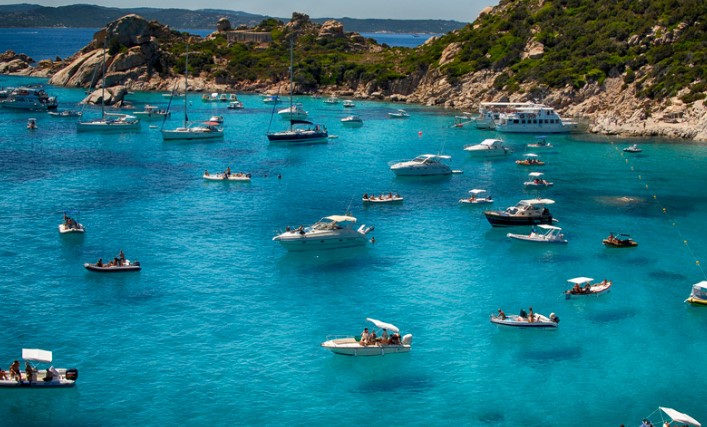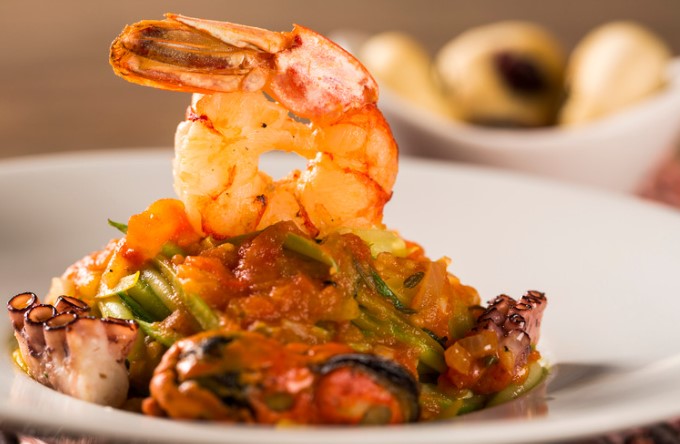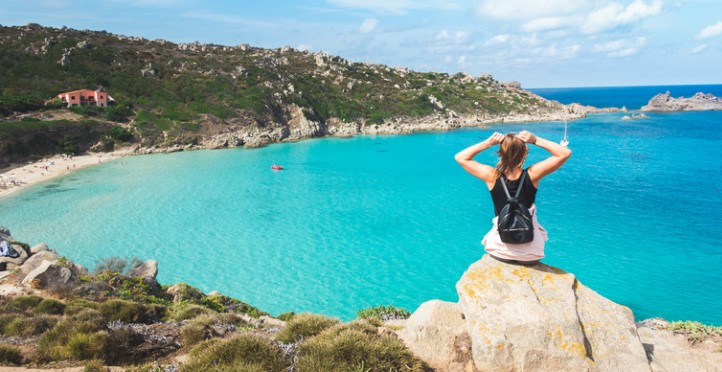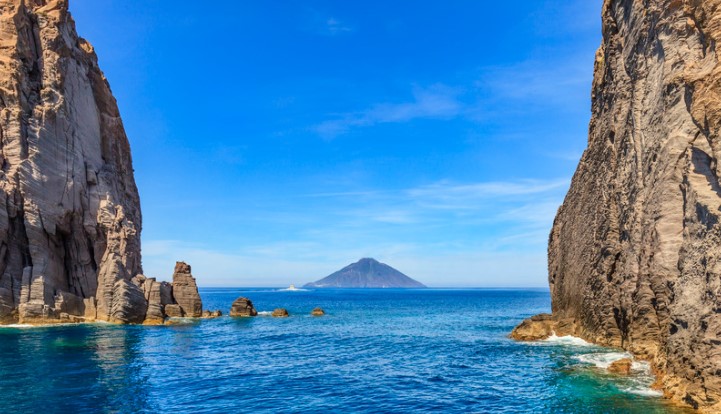Choosing Between Sardinia and Sicily: Unraveling th Allure of Italy's Premier Islands

Sardinia and Sicily shine as jewels of the Mediterranean, each boasting its distinct charm. Sardinia, the second-largest island, is renowned for its turquoise waters, beautiful beaches like Cala Brandinchi, and a history of tradition. On the flip side, Sicily, the largest island, dazzles with its diverse cultural heritage, from Greek history to Baroque beauty and the majestic Mount Etna.
Are you drawn to the crystal-clear waters of Sardinia’s coastal towns or the historical sites of Sicily’s beautiful cities? Whether it’s the allure of Sicilian cuisine, the serenity of pristine beaches, or the call of vibrant beach parties, our exploration will guide you in choosing the perfect Italian island for your next unforgettable vacation.
Geography & Landscape:
Sardinia:
Sardinia, a jewel in the heart of the Mediterranean, presents a unique blend of geography that’s both captivating and diverse. Dominated by rugged mountains that stretch across its terrain, Sardinia’s landscape is a mesmerizing mix of high peaks and deep valleys. Its most celebrated feature is its stunning coastline. With renowned beaches like Spiaggia della Pelosa and Cala Luna, the island offers diverse sandy retreats, from white sand beaches to secluded coves, all embraced by the island’s signature turquoise waters.
Sicily:
Sicily is the Mediterranean’s largest island and one of its most geographically diverse. The island boasts a tapestry of landscapes, from its rolling hills carpeted with olive groves and vineyards to its extensive coastline dotted with gorgeous beaches and picturesque towns.
However, standing tall and ever-present is Mt. Etna, Europe’s highest and most active volcano, casting its shadow over the eastern part of the island. This volcanic giant, along with the Aeolian and other volcanic islands, adds a fiery twist to Sicily’s geography, juxtaposing its tranquil beach destinations and historical landmarks.
Culture & History:
Sardinia:
Sardinia’s history is both deep and unique, with its roots tracing back to the mysterious Nuragic civilization. Scattered across the island, the thousands of archaeological sites, including the iconic Nuragic towers and settlements, stand a testament to this Bronze Age civilization that has left an indelible mark on Sardinia’s cultural fabric.
Modern-day Sardinia is also alive with vibrant festivals and traditions. Events such as the Cavalcade Sarda and the Mamuthones festival bring the streets to life with color, dance, and music. Adding to its distinctiveness is the Sardinian language or Sardo. While Italian is widely spoken, Sardo remains a proud emblem of the island’s unique identity, echoing its storied past and strong tradition.
Sicily:
Sicily, often described as a crossroads of civilizations, has a rich history that has seen the rise and fall of many empires. From the architectural wonders left behind by the Greeks to the ornate artistry of the Normans, every corner of the island whispers tales of its diverse past. This blend of cultures over the millennia has given birth to various Sicilian festivals, each celebrating the island’s multifaceted heritage.
The island’s culinary traditions, featuring famous dishes like Arancini and Cannoli, reflect this cultural amalgamation. Whether it’s the echoes of Greek history, the Baroque beauty of the 17th and 18th centuries, or the colorful mosaic of influences from Africa, the Middle East, and mainland Italy, Sicily is a testament to the harmonious blend of cultures that have shaped its identity.
Cuisine & Gastronomy:
Sardinia:
Sardinian cuisine reflects the island’s rich history, diverse landscape, and the sea surrounding it. A must-try is Malloreddus, a gnocchi often served with a hearty sausage sauce. For meat lovers, Porceddu, or roasted suckling pig, is a traditional delight that tantalizes the taste buds with its crispy skin and succulent meat. Ending a meal without sampling Seadas, a sweet pastry filled with cheese and drizzled with honey, would be a culinary oversight. Beyond these dishes, Sardinia boasts an array of unique beverages.
The island’s wines, especially the robust red Cannonau and the crisp white Vermentino, complement its delicious food. Not to forget, the local spirit, Mirto, made from myrtle berries, offers a delightful end to any Sardinian feast.
Sicily:
In Sicily, every meal is a journey through its rich history and the influences of the many cultures that have called the island home. Starting with the savory, Arancini, deep-fried rice balls filled with various ingredients make for a popular snack or starter. The island’s love for sweets is evident in the world-famous Cannoli, crispy pastry tubes filled with sweet ricotta cheese.
Another staple in Sicilian cuisine is Caponata, a flavorful aubergine dish that blends sweet and sour tastes to perfection. But the gastronomic tour continues beyond just food. Sicily’s fertile soils produce some of Italy’s finest wines, including the robust Nero d’Avola and the sweet Marsala.
Pair these with local desserts like Cassata or almond pastries, and you have a feast fit for the gods, showcasing the true essence of Sicilian cuisine.
Attractions & Activities:
Sardinia:
Sardinia’s Costa Smeralda is an absolute paradise for those seeking sun, sea, and sand. With its stunning beaches and azure waters, it remains one of the Mediterranean’s premier beach destinations. But beyond the coast, adventure beckons.
The Gennargentu National Park offers nature enthusiasts an array of activities, from hiking amidst its rugged terrains to bird-watching and discovering the island’s diverse flora and fauna. Sardinia’s charm isn’t limited to its natural wonders. Towns like San Teodoro and coastal cities, including Alghero and Cagliari, showcase the island’s vibrant culture, rich history, and the warm hospitality of its people.
Sicily:
History enthusiasts flock to Sicily to explore its numerous historic sites. The Valley of the Temples in Agrigento is a testament to the island’s Greek heritage. At the same time, the ancient city of Syracuse reveals layers of civilizations that have shaped Sicily over the millennia. For nature lovers, Mt. Etna isn’t just a scenic backdrop.
Hiking on this active volcano offers breathtaking views and an adrenaline rush. Beyond these iconic landmarks, Sicily is dotted with hidden gems. From the beautiful coastal towns of Taormina and Cefalù to interior wonders like the hilltop town of Enna, Sicily promises a blend of culture, beauty, and unforgettable experiences for every traveler.
Accessibility & Infrastructure:
Sardinia:
Navigating Sardinia is both convenient and straightforward. The island is well-connected with several airports, with Cagliari Elmas Airport, Olbia Costa Smeralda Airport, and Alghero Fertilia Airport being the major gateways. These airports frequently host flights from major European cities, making Sardinia easily accessible for international travelers. In addition, Sardinia’s major ports, such as Olbia and Porto Torres, facilitate ferry connections to mainland Italy and other Mediterranean destinations.
Once on the island, the road infrastructure is commendable, with a network of well-maintained highways and regional roads. While public transport is available, renting a car from a reputable company offers the most flexibility to explore the island’s secluded coves and picturesque towns.
Sicily:
Sicily, the largest island in the Mediterranean, boasts an extensive infrastructure to cater to its visitors. The major airports include Catania-Fontanarossa and Palermo Falcone-Borsellino Airport, ensuring excellent connectivity to European and international destinations. Additionally, the ports of Palermo and Messina serve as pivotal points for ferries linking Sicily with the Italian mainland and other islands.
As for intra-island transportation, Sicily offers a wide range of options. From its efficient rail system, connecting major cities to the vast network of buses serving even the remotest villages, moving around is a breeze. However, considering car rentals or joining local tours can provide a richer, more immersive experience for those looking to delve deeper into the island’s heart.
Practical Information for Travelers:
Sardinia:
For budget-conscious travelers, it’s essential to know that Sardinia, especially in areas like the Costa Smeralda, can sometimes be perceived as an expensive destination, especially during the peak summer months. However, with a wider range of options outside the main tourist hotspots, one can have a memorable yet budget-friendly experience.
Average temperatures during the summer season in Sardinia are warm and inviting, with dry summers being the norm. As for accommodation, from luxury resorts in North Sardinia to quaint B&Bs in hilltop towns like Tempio Pausania, there’s something for every traveler. If beach time is a priority, consider staying close to famous sandy stretches like Spiaggia del Principe or Cala Brandinchi for unforgettable experiences.
Sicily:
Compared to Sardinia, Sicily often emerges as a more affordable option for many. That said, popular destinations like Taormina can fetch higher prices, especially during the sunny summers. Sicily’s average temperatures are comfortable, with the summer months being hot but pleasant, thanks to the coastal breeze. Those looking to immerse themselves in the island’s rich culture and cultural heritage might consider visiting during spring or fall for a mix of pleasant temperatures and fewer crowds.
Accommodation in Sicily provides a vast range, from luxurious hotels overlooking crystal-clear waters to budget stays in the heart of its beautiful cities. For those keen on exploring historic landmarks, staying in the historic center of major cities or close to archaeological sites like the Valley of the Temples or Villa Romana del Casale can provide both convenience and a rich dose of the island’s fascinating history.
Conclusion:
The Mediterranean gems of Sardinia and Sicily each weave a unique tapestry of experiences that beckon travelers from around the world. With its pristine beaches like Costa Smeralda and rugged landscapes, Sardinia promises a blend of natural beauty and cultural immersion. Whether it’s savoring the unique flavors of Sardinian cuisine or exploring the remnants of the Nuragic civilization, Sardinia is a destination that resonates with those in search of both relaxation and adventure.
On the other hand, Sicily, the largest island in the Mediterranean, is a treasure trove of historical sites, stunning landscapes, and culinary traditions that span millennia. From the fiery peaks of Mount Etna to the Baroque beauty of its cities and the tranquil allure of its turquoise waters, Sicily offers a diverse palette of experiences that cater to a wide range of tastes.
Ultimately, choosing between Sardinia and Sicily is a delightful dilemma. Both islands, rich in cultural heritage and with natural wonders, promise unforgettable experiences. As you ponder your next vacation destination, consider what ignites your passion, stirs your soul, and aligns with your travel aspirations. Whether it’s the serene shores of Sardinia or the historic heartbeats of Sicily, rest assured both islands promise memories that will last a lifetime. Safe travels, and may your journey be as enriching as the destination!







